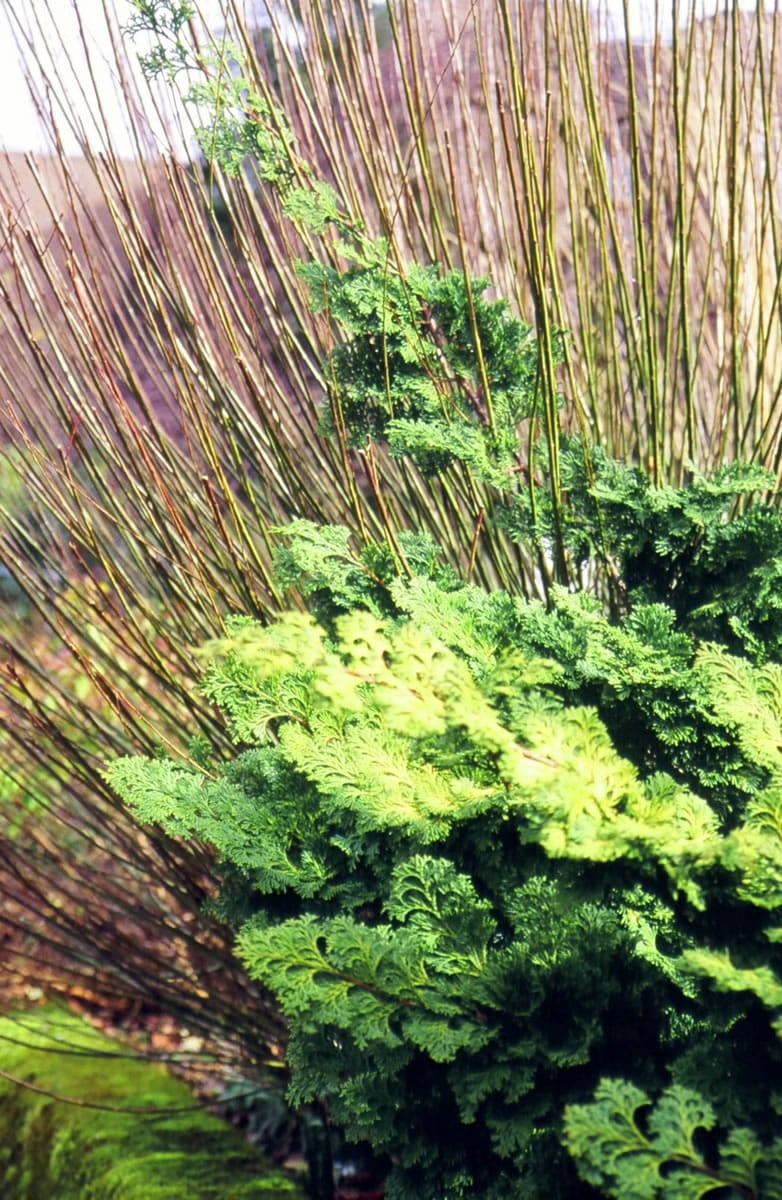Winter does not have to be a time of discontent in the garden. I’m not suggesting that we can eliminate the often dreary signs of winter weather such as low gray skies, faded sunlight and falling temperatures. I do, however, believe that part of the gardening process for every gardener is to learn to bring out the best in your personal winter landscape. Plants can make the difference.
I have said this before but it bears repeating: a selection of evergreen, deciduous and seasonal trees, shrubs and groundcovers is the key to a four-season garden. One of the easiest ways to improve the look of a winter garden is to add a selection of evergreen plants to the landscape. When winter does arrive, stripping the late summer divas of their seasonal regalia, it’s the evergreens that emerge from the background as strong, steadfast sentries watching over the landscape.
We are often guilty of taking evergreen shrubs for granted through most of the growing season. Plants that were once used only as a cheap alternative to delineate a property line or to block out an offensive view have now been developed into a formidable group of eye-catching evergreens. Rhododendron, andromeda and winter holly serve a distinct function as backdrop plants for cheerful spring bulbs and colorful summer perennials. Their solid nature allows other plants to stand out clear and well-defined against them. Now we see them as the bones of the garden.
Evergreen trees and shrubs rarely grasp our attention but when all the distractions fade away we are suddenly drawn to their attributes. What gardener doesn’t admire the deep green structural branching habit of the classic Hinoki false cypress? This classic is also known by its Latin name of Chamaecyparis obtusa. This hardy evergreen conifer comes in so many forms of such variety that they might seem to be different types of plants. Close inspection will confirm their similarities. They range in size from rock garden shrublets to timber trees. All are extremely hardy requiring a well-drained, moisture-retentive soil.
One admirable false cypress that stands out as clearly as an exclamation point in the garden is Chamaecyparis nootkatensis “Green Arrow.” This is a fast-growing, semi-pendulous form of an Alaskan native. Dark green leaves highlight the very narrow, yet open, airy branches. “Green Arrow” grows 15 to 20 feet tall and 5 or more feet wide in 10 years.
Over the years I have come to believe that gardeners need an occasional personal opinion reassessment. I have definitely seen the value of changing my mind. There are certain plants that were badly used in years past in the Northwest garden. Just hearing their name paints an unattractive picture in our minds even though many of their recent introductions have been highly garden worthy. One group that definitely needs to be reconsidered by the plant collector is juniper. Another is the arborvitae. Many are attractive enough to be used as specimen plants.
Arborvitae is listed in plant catalogs and dictionaries as Thuja occidentalis. Two of my favorites are T. occidentalis “Sunkist” and T. occidentalis “Walter Brown” (sold in nurseries under the trademark name of Techny Gold). “Sunkist” is an extremely hardy selection of our native eastern arborvitae with extremely bright golden new growth. It is semi-dwarf with a broad pyramidal form and the mix of green- and gold-tipped foliage seems to bring light into the winter garden.
Thuja occidentalis “Techny Gold” has striking golden yellow foliage that appears to intensify in the winter. This one is tough, hardy and burn resistant in the sunniest location. “Techny Gold” has a densely broad pyramidal habit and could certainly stand on its own as an attractive specimen shrub. If you still want to use arborvitae as a fence or screen, consider planting them in natural groups with each individual plant a different distance away from an imaginary center line instead of in one long straight row.
You may take evergreens for granted the rest of the year, but in winter, you will admire and appreciate their hardy constitutions, vibrantly colored foliage and distinctive texture. Once cold weather has stripped deciduous plants to their bare branches, the needled evergreens remind us of why we chose them for the garden in the first place.
Robb Rosser is a WSU-certified master gardener. Reach him at Write2Robb@aol.com.



